Supply chain analysis gives you a clear view of how your business moves products and information from suppliers to customers. When you use supply chain analysis, you spot inefficiencies and improve your supply chain management. In manufacturing, analysis helps you respond quickly to changes and avoid costly disruptions. Digital transformation now drives supply chain analysis by enhancing data connectivity and supporting analytics for smarter decisions. You benefit from data-driven supply chain analysis through real-time insights and actionable analytics. Many manufacturers face challenges with analytics and data skills, but tools like FineReport make analysis accessible. FineReport enables you to base your supply chain management on data-driven decisions, so you stay competitive.
Supply Chain Analysis Overview
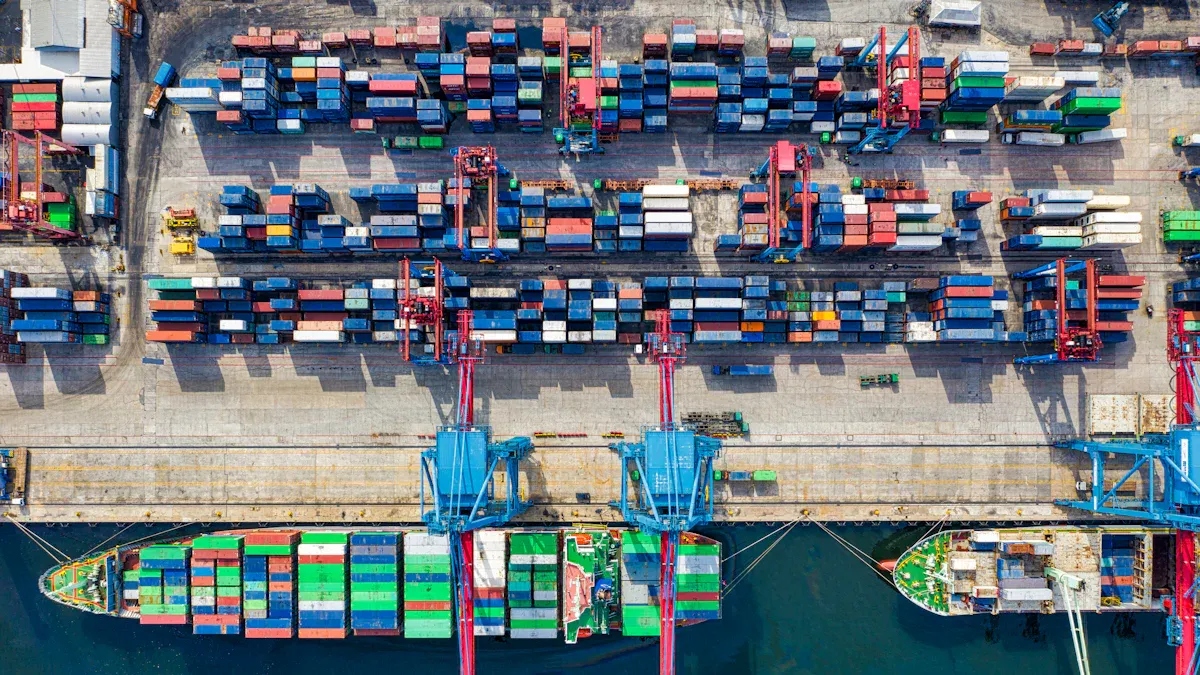
Definition
Supply chain analysis gives you a structured way to evaluate how your business moves products, information, and finances from suppliers to customers. You use supply chain analysis to study operations and processes, aiming for improvement at every stage. This approach involves both strategic and operational perspectives. You model processes and measure performance to see how well your supply chain works and how it affects your bottom line.
- Supply chain analysis is an integrated evaluation of supply chain processes aimed at improvement.
- You systematically study operations and processes within the supply chain from both strategic and operational perspectives.
- Key tasks include process modeling and performance measurement to assess success and economic performance.
Supply chain analytics helps you understand the flow of goods and information. You use analytics to identify bottlenecks, reduce costs, and improve efficiency. When you apply supply chain analytics, you gain insights that support better decision-making and help you respond to changes in the market.
Global manufacturers now adopt supply chain analysis to address new challenges. You see trends like reshoring and nearshoring, which move operations closer to home to cut costs and avoid tariffs. Many organizations invest in generative AI for demand forecasting and risk management. Sustainability also becomes a major focus, with companies increasing efforts to make their supply chains more environmentally friendly.
Key components of supply chain analytics
You need to understand the key components of supply chain analytics to build a strong analysis framework. Academic literature identifies several essential elements that shape how supply chains operate and adapt to challenges.
- Integration of a supply chain
- External determinants and operational factors
- Strategic planning
- Virtual companies
- Knowledge
- Information Technology
- Trust
- Commitment
- Communication
- Cooperation
- Adaptation
- Interdependence
The key components of supply chain analytics include integration, operational factors, strategic planning, and relational dynamics. These elements help you understand how supply chains respond to disruptions, such as the COVID-19 crisis.
Supply chain analysis frameworks also address risk management and mitigation. You follow a structured process:
- Identify: Spot potential problems affecting the supply chain.
- Assess: Determine the likelihood and impact of vulnerabilities.
- Mitigate: Develop strategies to address significant risks.
- Monitor: Regularly review operations and policies to limit risk exposure.
You use supply chain analytics to identify risks, assess their impact, and implement strategies like diversification and redundancy. Continuous monitoring helps you adjust your approach as needed.
Different industries focus on unique aspects of supply chain analysis. The table below shows how retail and manufacturing prioritize their strategies:
| Industry | Key Focus Areas | Operational Strategies |
|---|---|---|
| Retail | Customer interaction, Inventory management | Emphasizes demand forecasting and order fulfillment |
| Manufacturing | Production efficiency, Supplier relationships | Focuses on procurement strategies and supplier collaboration |
You see that retail relies on demand forecasting, inventory management, marketing, and order fulfillment. Manufacturing emphasizes production efficiency and supplier relationships, using procurement strategies and collaboration to optimize performance.
Supply chain analytics gives you the tools to analyze these components. You use analytics to track performance, manage risks, and adapt to changing conditions. When you understand the key components of supply chain analytics, you build a resilient and efficient supply chain that supports your business goals.
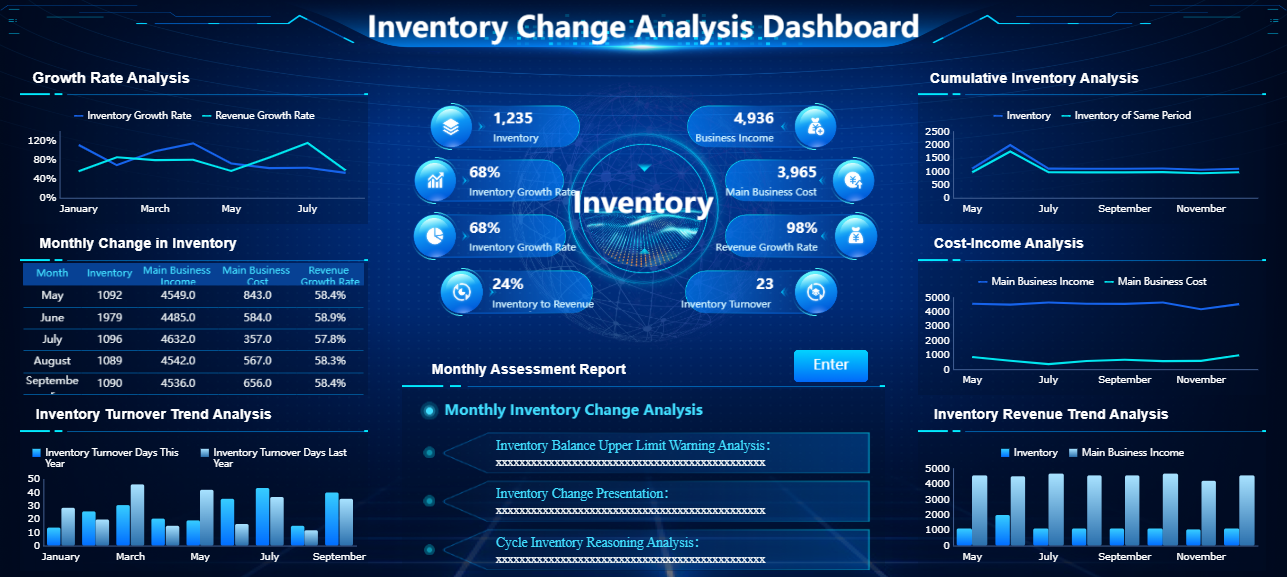
How Supply Chain Analysis Works
Process steps in supply chain analysis
You need a clear process to make supply chain analysis effective. Most supply chain management textbooks describe five main steps that guide your analysis. Each step helps you understand and improve your supply chain analytics.
- Plan: You start by designing your supply chain strategy. This step involves setting goals and making strategic decisions that shape your analysis.
- Source: You select suppliers and negotiate contracts. This part of supply chain analysis focuses on obtaining the materials you need.
- Make: You oversee production and quality control. Analysis at this stage ensures your goods or services meet standards.
- Deliver: You manage logistics and transportation. Supply chain analytics help you track order fulfillment and delivery performance.
- Return: You handle product returns and sustainability. Analysis here supports reverse logistics and helps you improve customer satisfaction.
Supply chain analysis uses these steps to break down complex operations. You apply supply chain analytics at each stage to identify bottlenecks, reduce costs, and boost efficiency. When you follow this process, you gain a structured approach to analysis and make better decisions.
Tip: Use supply chain analytics to monitor each step. You will spot issues early and respond quickly.
Performance evaluation in supply chain analysis
You measure the success of your supply chain analysis using performance metrics and benchmarking. Organizations rely on standardized metrics to evaluate supply chain analytics initiatives. You compare your results against best-in-class companies to find areas for improvement.
Common metrics in supply chain analysis include:
- Perfect Order Index
- Days Sales Outstanding (DSO)
- Shipping Accuracy
- Inventory Turnover
- Order Cycle Time
- Cash-to-Cash Cycle Time
- Supplier Lead Time
You collect data and use advanced analytics to turn information into actionable insights. Supply chain analytics help you track performance, set benchmarks, and drive continuous improvement. When you use analysis and analytics together, you build a resilient supply chain that adapts to change.
Note: Regular performance evaluation in supply chain analysis ensures your analytics stay relevant and effective.
Supply Chain Analysis Tools

FineReport for supply chain analytics
You have many options when choosing supply chain analytics tools for your business. Large enterprises rely on platforms that deliver real-time insights and support efficient supply chain management. Some of the leading supply chain analytics tools include:
- WMSight: Offers real-time processing and configurable dashboards for distribution centers.
- Axway Decision Insight: Provides operational intelligence for proactive supply chain management.
- JASCI Cloud Supply Chain Analytics System: Features advanced analytics powered by IBM Cognos.
- Cognos Analytics: Delivers self-service analytics for supply chain analysis.
- Demand Solutions Supply Chain Intelligence: Supports predictive insights for supply chain management.
- PeopleSoft Supply Chain Analytics: Manages operational performance with real-time information.
- Birst Supply Chain Analytics: Enables global supply chain visibility.
- Halo Supply Chain Analytics: Combines data integration and visualization for planning.
- Deloitte Supply Chain Solutions: Optimizes inventory and manages risks.
- Tableau: Streamlines transportation and inventory with visual analytics.
- JDA Supply Chain Solutions: Covers end-to-end planning and execution.
- Neubrain Supply Chain and Logistics Analytics Software: Delivers logistics insights.
- TARGIT Decision Suite: Provides tailored analytics for procurement and logistics.
- Descartes Reporting Services Supply Chain Analytics: Offers fast reporting for supply chain management.
Digital transformation drives the adoption of these tools. You benefit from improved efficiency, visibility, and data-driven decision-making. Advanced technologies like AI and IoT help you optimize inventory and forecast demand. Real-time tracking gives you immediate insights, which improves operational agility and profitability.
FineReport stands out as a supply chain analytics solution that supports your analysis needs. You use FineReport to connect diverse data sources, process information, and visualize results. FineReport enhances efficiency by at least 50% compared to traditional methods. You receive real-time feedback and validate outcomes instantly. FineReport integrates with platforms such as AWS, Google Cloud, Snowflake, and Databricks, making it a flexible choice for supply chain management.
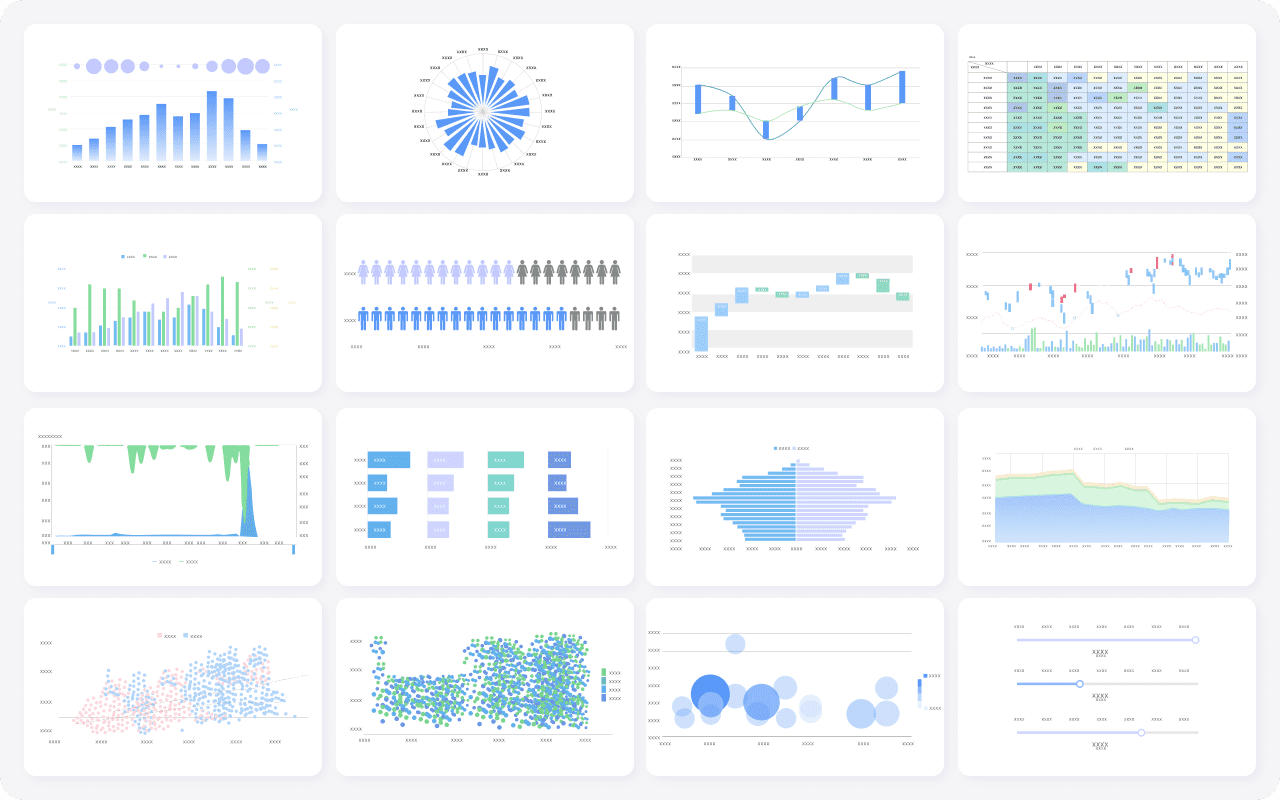
Data integration and visualization in supply chain analysis
You need strong data integration and visualization features to make supply chain analysis effective. Most supply chain analytics platforms connect to both internal and external data sources. You can see examples in the table below:
| Data Source Type | Examples |
|---|---|
| Internal Data Sources | POS, supplier, demand, production data |
| External Data Sources | Marketplaces, weather, demographics, competitive movements |
| Internal Systems | ERP, WMS, TMS, SCM, CRM |
| External Sources | Supplier databases, third-party logistics, IoT devices |
FineReport supports seamless integration with these sources. You use FineReport to unify data from ERP, CRM, and external systems, which improves your supply chain management analysis. FineReport provides interactive dashboards for real-time monitoring and analysis. You can drill through metrics for deeper insights and use component jumps for easy navigation. The table below highlights key visualization features:
| Feature | Description |
|---|---|
| Interactive Dashboards | Real-time monitoring and analysis of supply chain activities, integrating data from various sources. |
| Drill-Through | Click on metrics for detailed performance data and supplier information. |
| Component Jump | Navigate dashboards easily and access different data components. |
Self-service dashboards empower you to access and analyze data independently. You identify inefficiencies, optimize resources, and reduce costs. Real-time data improves visibility and transparency, helping you respond quickly to disruptions. You build a data-driven culture where employees at all levels make informed decisions using supply chain analytics.
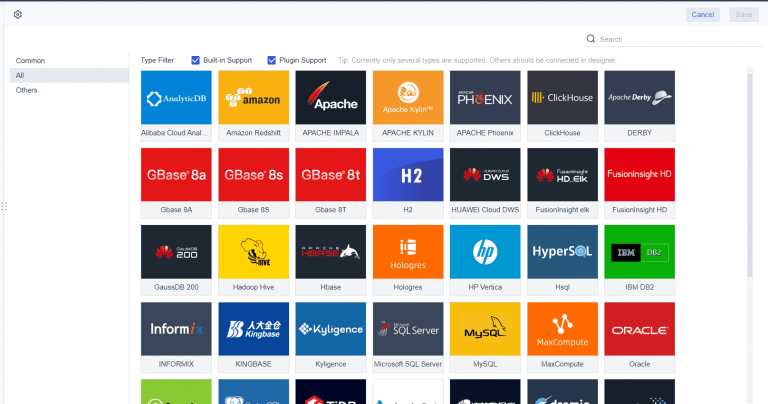
Benefits and Challenges of Supply Chain Analysis
Main benefits of supply chain analysis
You gain many advantages when you use supply chain analysis in your business. This approach helps you understand your supply chain performance and make better decisions. The benefits of supply chain analysis reach across cost, speed, and visibility. You can see the main benefits in the table below:
| Benefit | Description |
|---|---|
| Cost Reduction | You identify cost-saving opportunities by monitoring metrics like inventory turnover. |
| Improved Delivery Times | You use order cycle time and on-time delivery rates to find bottlenecks and increase speed. |
| Enhanced Visibility | You monitor KPIs regularly to get a full view of supply chain performance. |
| Operational Efficiency | You streamline operations, reduce delays, and achieve faster turnaround times. |
Supply chain analytics drive these improvements. Companies that invest in analytics often report cost reductions between 15% and 40%. Some manufacturers have cut inventory costs by as much as $1 billion. Retailers have saved up to 27% on shipping costs. You also see faster cash flow and lower emissions in some industries. These measurable results show the real benefits of supply chain analysis and analytics for your operations.
Note: Optimization through supply chain analysis supports better supply chain management and helps you stay competitive.
Common challenges in supply chain analysis
You may face several challenges when you implement supply chain analysis. These issues can slow down your progress and affect your supply chain management. The most common challenges include:
- Inaccurate data can lead to poor decisions and inefficiency in your operations.
- Lack of collaboration and communication makes it hard to share information across teams.
- Limited flexibility can cause sales to drop when demand changes quickly.
- Lack of visibility makes it difficult to spot areas for improvement in supply chain performance.
- Material scarcity is a major threat to supply chain management today.
- Demand planning becomes more complex due to global uncertainty.
Supply chain analytics can help you address these challenges, but you need to prepare for them. Many organizations overcome these obstacles by automating processes, partnering with industry peers, and working to achieve end-to-end visibility. You should also involve all stakeholders, set clear goals, and provide training to ensure successful analysis and analytics adoption.
Tip: Regularly review your supply chain analysis process to identify new risks and keep your operations running smoothly.
How To Conduct a Supply Chain Analysis
Practical steps for supply chain analysis
You need a clear roadmap when you ask how to conduct a supply chain analysis. This process helps you understand your supply chain and make informed decisions. You can follow these practical steps to ensure your supply chain analysis delivers actionable results:
- Define your objectives, scope, and commodity profile.
You start by setting clear goals for your supply chain analysis. Decide which products or services you want to analyze. Outline the boundaries of your analysis to focus your efforts. - Research the market and pricing structure for your commodity.
You gather information about market trends, pricing, and competitors. This step gives you context for your supply chain analytics and helps you benchmark performance. - Conduct in-depth supplier analysis.
You evaluate suppliers based on reliability, cost, and quality. Use supply chain analytics to compare supplier performance and identify risks. - Identify key market indicators.
You track metrics such as demand, inventory turnover, and lead times. Supply chain analysis relies on these indicators to measure efficiency and spot opportunities. - Compile your findings and outline final recommendations.
You summarize your analysis and present actionable insights. Use dashboards in FineReport to visualize results and share recommendations with your team.
Tip: Prepare your data before starting supply chain analysis. Ensure you have enough data to reflect your operations accurately. Clean your data to remove errors and inconsistencies. Include all necessary components to avoid incomplete analysis.
FineReport supports each step of supply chain analysis. You connect to multiple data sources, including ERP, CRM, and external systems. FineReport helps you prepare and process data, create self-service datasets, and build interactive dashboards. You can collaborate with your team by sharing dashboards and reports securely.

Tips for success in supply chain analysis
You can improve your supply chain analysis by following proven strategies and best practices. These tips help you integrate supply chain analytics into your business and maximize results, especially in manufacturing.
| Best Practice | Description |
|---|---|
| Innovation is King | Use automation, AI, and machine learning to enhance supply chain analytics and processes. |
| Commitment to Reduction in Non-Value-Added Tasks | Automate tasks that do not add value using predictive analytics and AI. |
| Invest Only in Needed Inventory | Optimize inventory by implementing as-needed systems to avoid overstocking. |
| End-to-End Visibility Access | Integrate systems for full visibility across your supply chain, enabling quick decisions. |
You should foster collaboration when conducting supply chain analysis. Leverage technology to automate processes and improve data access. Enhance communication with suppliers to strengthen relationships and performance. Build strong partnerships by aligning goals and sharing insights.
- Explore and exploit knowledge from both internal and external sources for continuous improvement.
- Collaborate horizontally across departments and vertically with external partners.
- Balance incremental improvements with radical innovation in your supply chain analytics.
You can use these strategies to integrate supply chain analytics into your existing processes:
- Utilize predictive analytics to forecast demand and optimize inventory levels.
- Implement prescriptive analytics to recommend actions based on predictive insights.
- Integrate supply chain analytics with other business functions to improve collaboration.
- Embrace continuous improvement by regularly reviewing and updating your analytics processes.
- Establish feedback loops to gather insights from stakeholders and refine your analysis.
FineReport makes supply chain analysis easier by providing tools for data preparation, dashboard creation, and team collaboration. You can connect to diverse data sources, clean and process your data, and visualize key metrics. FineReport's self-service dashboards empower you to analyze supply chain performance and share insights across your organization.
Note: Successful supply chain analysis depends on accurate data, strong collaboration, and continuous improvement. Use analytics to drive innovation and efficiency in your supply chain.
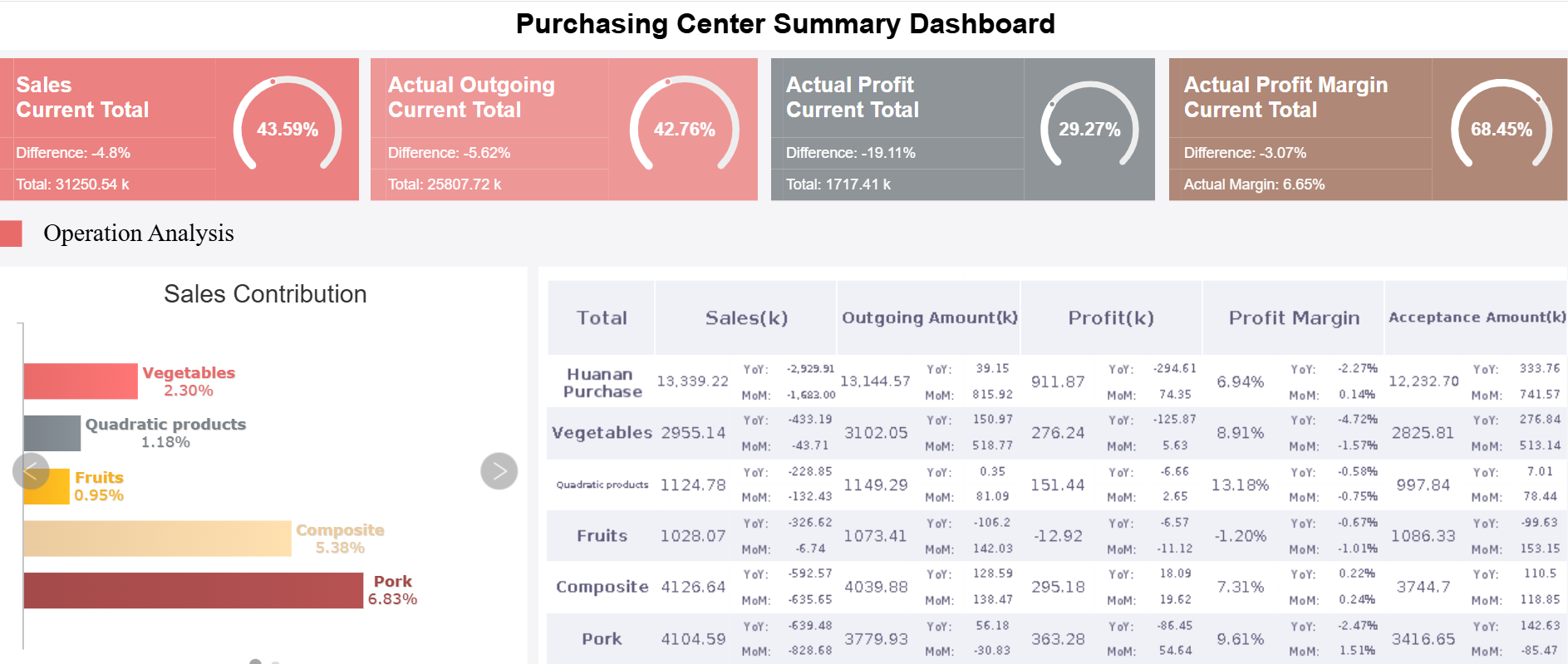
Supply chain analysis gives you the power to improve efficiency and boost competitiveness. You see real value when you optimize processes, reduce costs, and meet customer expectations.
- You make better decisions with data insights, which increases value across your supply chain.
- You address bottlenecks and risks, leading to higher productivity and greater value for your business.
- You enhance customer satisfaction by delivering products on time and maintaining quality.
Advanced analytics tools like FineReport help you turn data into actionable insights. You forecast demand, manage inventory, and identify risks before they become problems. Companies use these tools to achieve strategic value and operational improvement. Explore supply chain analytics to strengthen your decision-making and drive your business forward.
Continue Reading About Supply Chain Analysis
What is Supply Chain Risk Management Process and How It Work
Supply Chain Risk Explained and Why it Matters Now
What is Supply Chain Visibility and Why Does It Matter
Supply Chain Analytics Explained and Its Importance
FAQ

The Author
Lewis
Senior Data Analyst at FanRuan
Related Articles
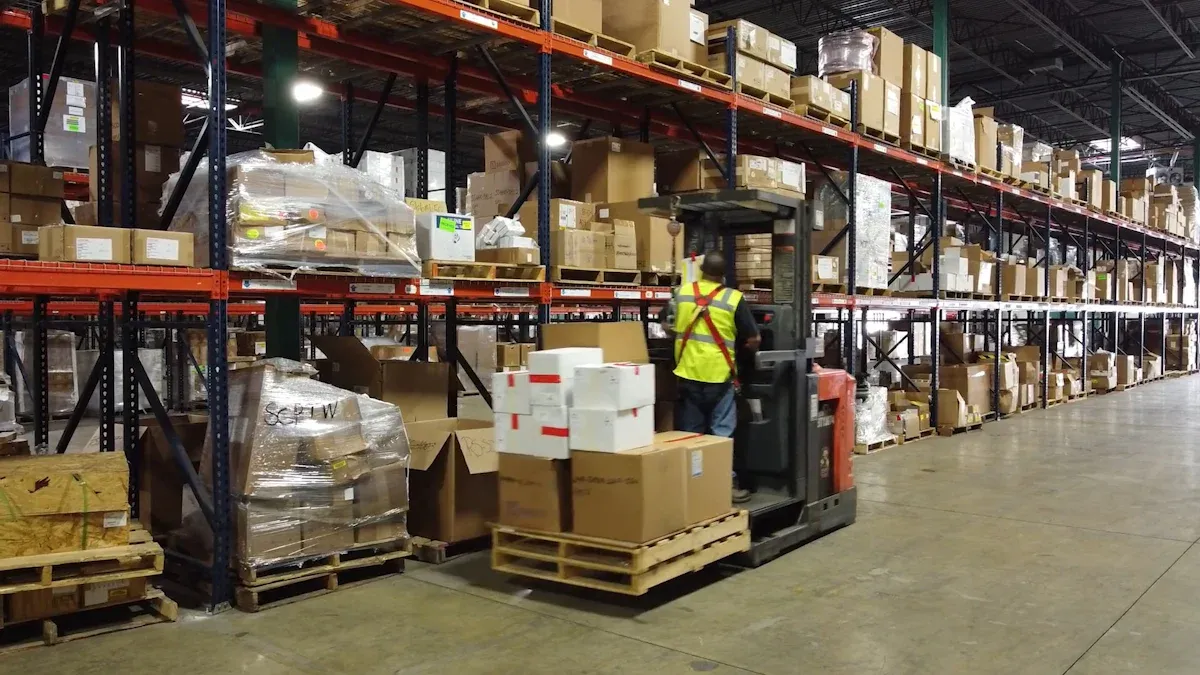
Top 10 Supply Chain Tracking Software for 2026
Compare the top supply chain tracking software for 2026 to boost visibility, automate workflows, and leverage AI analytics for smarter decisions.
Lewis
Dec 18, 2025

Top 10 Supply Chain Management Software for Small Businesses
See the top 10 supply chain management software comparison for small businesses in 2026. Compare features, pricing, and scalability to find your best fit.
Lewis
Dec 18, 2025
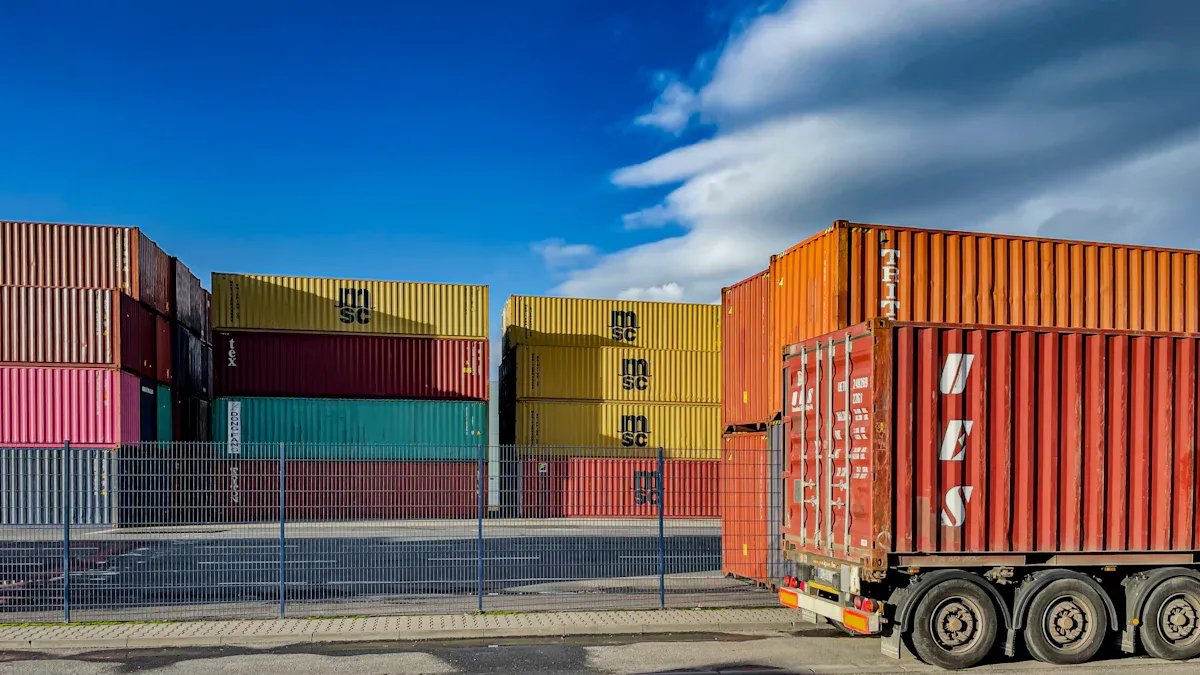
Top 10 Supply Chain Visibility Tools for 2025
Compare the top 10 supply chain visibility tools for 2025 to enhance real-time tracking, integration, and predictive analytics for efficient operations.
Lewis
Oct 29, 2025




